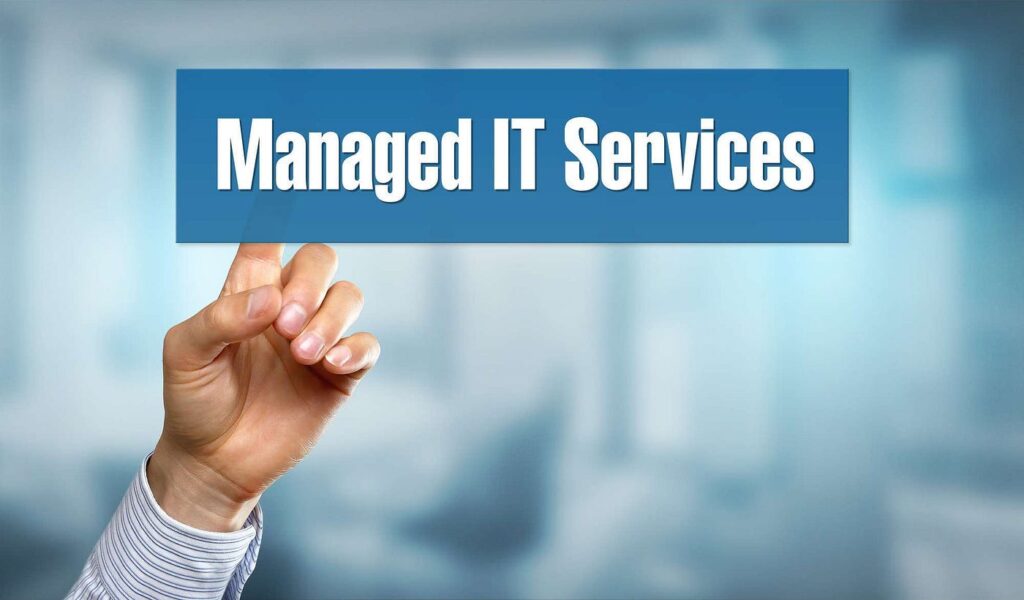In today’s digital age, businesses rely heavily on technology to operate efficiently and effectively. However, managing and maintaining an IT infrastructure can be complex, time-consuming, and costly for many organizations. This is where Managed IT Services come into play, offering comprehensive solutions to address a wide range of IT needs. Let’s explore what Managed IT Services entail, their cost benefits, as well as the pros and cons of employing them.
Comprehensive IT Support:
Managed IT Services encompass a broad spectrum of support, including network monitoring, cybersecurity, data backup and recovery, software updates, and technical troubleshooting. These services ensure that your IT systems remain operational and secure around the clock. With proactive monitoring and maintenance, Managed IT Services providers can identify and address potential issues before they escalate into major problems, minimizing downtime and disruptions to your business operations.
Cost Benefit Analysis:

While the upfront cost of hiring Managed IT Services may seem significant, it’s essential to consider the long-term savings and benefits they provide. By outsourcing your IT needs to a managed service provider, you can avoid the expenses associated with hiring and training in-house IT staff, purchasing expensive hardware and software, and dealing with unexpected repair costs. Additionally, the predictable monthly fee structure of Managed IT Services allows for better budgeting and financial planning, reducing the risk of unforeseen expenses.
The costs associated with with the services provided will vary widely by each businesses need but a general list that can be followed is:
- Service Tier and Scope: Managed IT service providers typically offer different tiers of service with varying levels of support and features. The more comprehensive the services, the higher the cost is likely to be.
- Number of Devices/Users: Many providers base their pricing on the number of devices or users they will be supporting. The more devices or users you have, the higher the cost may be.
- Customization and Additional Services: If you require custom solutions or additional services beyond standard offerings, expect to pay more for these features.
- Service Level Agreements (SLAs): SLAs define the level of service you can expect from the provider, including response times for support requests and uptime guarantees. Providers offering more robust SLAs may charge higher fees.
- Initial Setup and Onboarding Costs: There may be initial setup and onboarding fees associated with getting started with a managed IT service provider.
- Contract Length: Some providers offer discounts for longer contract commitments, while others may have month-to-month options at a higher rate.
- Quality and Reputation of the Provider: Higher-quality providers with a strong reputation in the industry may charge more for their services.
- Additional Costs: Be aware of any additional costs such as licensing fees for software, hardware upgrades, or any other ancillary expenses that may arise.
Pros of Hiring Managed IT Services:
One of the key advantages of hiring Managed IT Services is access to a team of skilled professionals with expertise in various areas of information technology. These professionals stay up-to-date with the latest industry trends, best practices, and security protocols, ensuring that your IT infrastructure remains resilient and compliant with regulatory requirements. Moreover, Managed IT Services offer scalability, allowing businesses to easily adjust their IT resources as their needs evolve without the hassle of hiring and training additional staff or investing in new hardware.
Enhanced Security Measures

Cybersecurity threats pose a significant risk to businesses of all sizes. Managed IT Services prioritize security by implementing robust measures to safeguard data, networks, and systems against cyberattacks, viruses, malware, and other malicious activities. These services include proactive monitoring, threat detection, vulnerability assessments, patch management, and incident response protocols. By proactively addressing security vulnerabilities, Managed IT Services help businesses mitigate risks and protect sensitive information from unauthorized access or breaches.
Some historical examples of how much this can cost and damage a company’s reputation are:
- Equifax (2017): One of the largest credit reporting agencies, Equifax, experienced a massive data breach in 2017, affecting approximately 147 million consumers. The breach exposed sensitive personal information, including Social Security numbers, birth dates, addresses, and in some cases, driver’s license numbers. The breach settlement and costs reached billions of dollars.
- Yahoo (2013-2014): Yahoo suffered one of the most significant data breaches in history, affecting approximately 3 billion user accounts. The breach compromised personal information such as names, email addresses, phone numbers, and encrypted passwords. The incident led to a significant drop in Yahoo’s valuation and resulted in costly legal settlements.
- Marriott International (2014-2018): Marriott International experienced a data breach that exposed the personal information of up to 500 million customers who had stayed at its Starwood properties. The breach, which began in 2014 but wasn’t discovered until 2018, compromised sensitive information such as passport numbers, email addresses, and reservation details. Marriott faced substantial costs related to regulatory fines, legal settlements, and remediation efforts.
- Target (2013): Target Corporation experienced a data breach during the holiday shopping season in 2013. The breach compromised credit and debit card information of approximately 40 million customers and personal information of up to 70 million individuals. Target incurred significant financial losses due to the breach, including costs related to investigations, legal fees, and settlements with affected parties.
- Sony PlayStation Network (2011): In 2011, the Sony PlayStation Network suffered a severe data breach that exposed the personal information, including names, addresses, and credit card details, of over 77 million users. The breach resulted in costly downtime for the network, legal settlements, and reputational damage to Sony’s brand.

Cons of Managed IT Services:
Despite their numerous benefits, Managed IT Services may not be suitable for every organization. One potential drawback is the loss of direct control over your IT infrastructure. While outsourcing IT operations can free up internal resources and streamline processes, some businesses may feel uncomfortable relinquishing control to a third-party provider. Moreover, communication barriers and response times can sometimes pose challenges, especially if the Managed IT Services provider is located in a different time zone or lacks adequate support channels.
Another consideration is the potential for hidden costs associated with Managed IT Services. While the monthly fee structure may appear straightforward, additional charges for out-of-scope services, emergency support, or hardware/software upgrades can quickly add up. It’s crucial for businesses to thoroughly review service level agreements and pricing structures before committing to a Managed IT Services provider to avoid any surprises down the line.
In conclusion, Managed IT Services offer a comprehensive solution for businesses seeking to streamline their IT operations, enhance security, and reduce costs. By outsourcing IT functions to a trusted provider, organizations can focus on their core competencies while gaining access to specialized expertise and resources. However, it’s essential to weigh the pros and cons carefully and select a Managed IT Services provider that aligns with your business goals, budget, and technical requirements. With the right partner, Managed IT Services can serve as a valuable asset in driving business growth and innovation in today’s competitive landscape.



